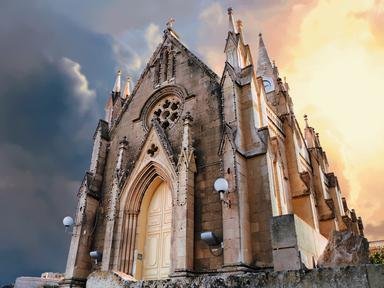Quiz Answer Key and Fun Facts
1. Candlemas is also known as the Feast of the Presentation of the Lord. What, other than the presentation of Jesus at the temple, does Candlemas commemorate?
2. When does Candlemas usually fall in the Western church?
3. Which of these early church fathers, who became archbishop of Constantinople in AD 397, delivered a homily about this feast which still exists today?
4. What French painter and illustrator, who moved to London in 1871, painted "The Presentation of Jesus in the Temple"?
5. The story of Christ's presentation at the temple is told in all four canonical Gospels.
6. What sacrifice did Mary bring to the temple after the days of her purification were complete?
7. Who came into the temple when Jesus was presented, blessed God, and then told Mary, "This child is destined to cause the falling and rising of many in Israel, and to be a sign that will be spoken against, so that the thoughts of many hearts will be revealed"?
8. When Mary presented Jesus at the temple, she was told, "a ___ will pierce your own soul also" (NIV). What word is missing from this blank?
9. What prophetess came into the temple at Jesus's presentation and gave thanks to God?
10. In the Eastern Orthodox church, the Feast of the Presentation of Jesus is sometimes called Hypapante, which means what?
11. Who composed the church cantata "Erfreute Zeit im neuen Bunde" for use during this feast's services?
12. Who wrote, "Down with the holly, ivy, all, / Wherewith ye dress'd the Christmas Hall" in his 17th century poem about the eve of Candlemas?
13. An appropriate poem for The Feast of the Dedication of Jesus is "A Song for Simeon." What 20th century poet wrote it?
14. In what country is it traditional to eat a lot of crepes on Candlemas?
15. Traditions surrounding Candlemas may have influenced the traditions surrounding what secular American holiday, which falls on the same day?
Source: Author
skylarb
This quiz was reviewed by FunTrivia editor
looney_tunes before going online.
Any errors found in FunTrivia content are routinely corrected through our feedback system.

